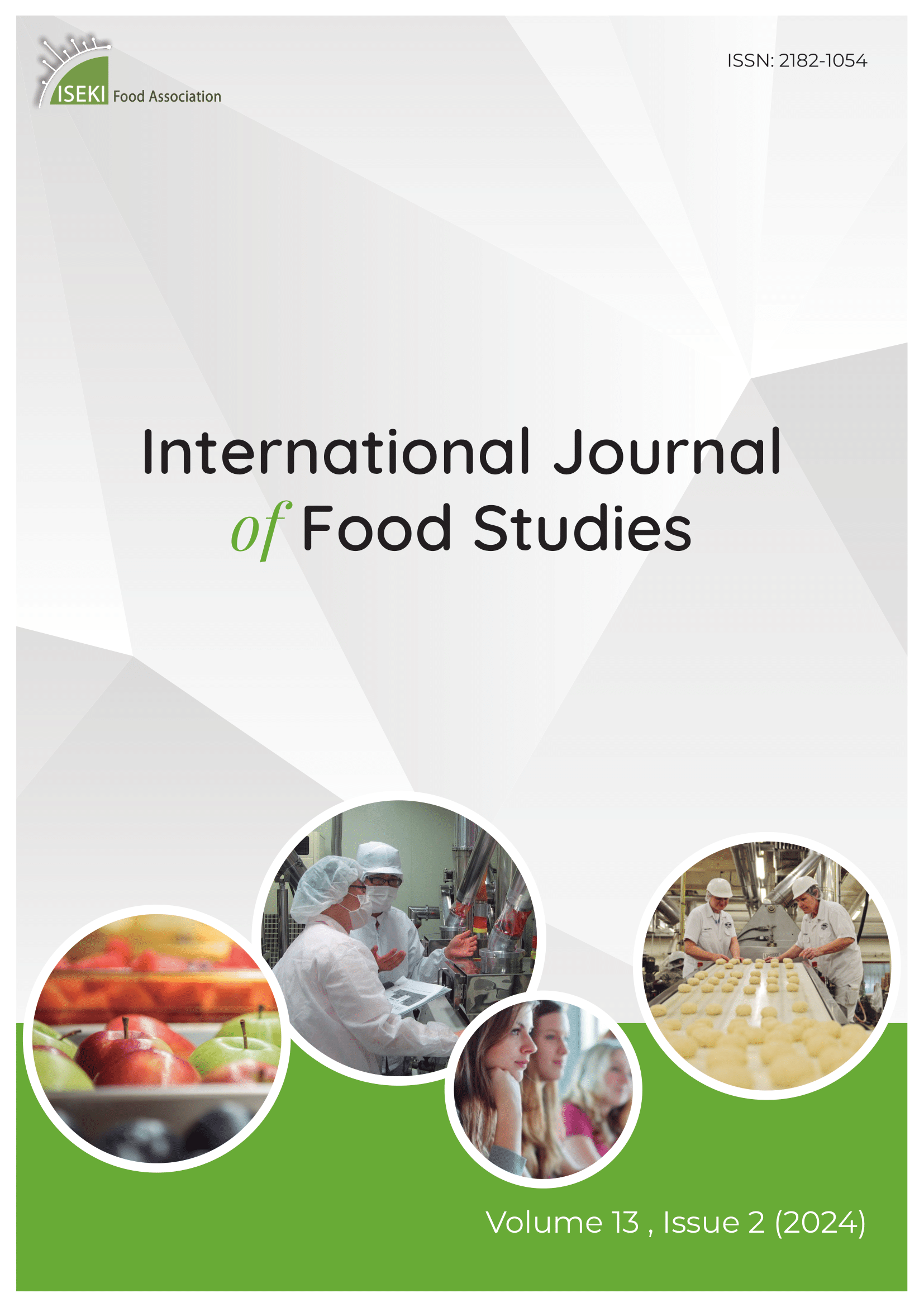Current issue

Volume 13, Issue 2, 2024
Online ISSN: 2182-1054
Volume 13 , Issue 2, (2024)
Published: 18.10.2024.
Open Access
All issues
Contents
17.10.2025.
Original scientific paper
Impact of UV-C Irradiation on Quality Characteristics of Fresh-cut and Whole Plum Tomatoes
This study investigated the effects of three key factors, UV-C irradiation, storage time, and cutting effect, on the physicochemical properties of fresh-cut and whole plum tomatoes. UV-C irradiation was applied at three low radiation doses (0.22, 0.4 and 1.23 kJ/m²) appropriate for the ripening stage of the tomato. Tomatoes were subsequently stored at 5.9 °C for four days (96 h). Mass loss analysis demonstrated significantly higher water loss in fresh-cut tomatoes (up to 12.39%) compared to whole tomatoes (max 2.65%) with UV-C treatment amplifying this effect, especially at higher UV-C doses. Colorimetric changes were more pronounced in fresh-cut samples, as indicated by the higher total colour difference (ΔE*=6.23 vs. 2.95 in whole tomatoes) and greater chroma (C*) reduction (11.6% vs. 4.4%) reflecting increased oxidative stress induced by tomato cutting and UV-C-exposure. Firmness decreased more in fresh-cut tomatoes (F|max reduction up to 28.5%), although UV-C irradiation moderately preserved firmness in whole fruits. Respiration rate was higher in fresh-cut tomatoes, rising by 64% in fresh-cut controls compared to whole controls (5.21 vs. 3.17 mL CO₂·kg⁻¹·h⁻¹), and was further increased by UV-C exposure (up to 7.43 mL CO₂·kg⁻¹·h⁻¹ at 1.23 kJ/m²), indicating enhanced metabolic stress. Additionally, soluble solids and titratable acidity responded to UV-C treatment, with more pronounced changes in fresh-cut tomatoes, suggesting metabolic changes. Ethylene production increased significantly in fresh-cut tomatoes, particularly at later storage times, contributing in accelerated ripening. Overall, UV-C irradiation demonstrated potential for extending shelf-life and preserving quality in whole tomatoes by limiting water loss and maintaining firmness and colour stability. However, in fresh-cut tomatoes, the benefits were UV-C dose-dependent and limited by increased susceptibility to oxidative stress and ripening. Optimization of UV-C dosage appears necessary to balance beneficial antimicrobial and shelf-life extension effects with the minimization of quality degradation in fresh-cut products.
GEORGE XANTHOPOULOS, DIAMANTO LENTZOU, CHARALAMPOS TEMPLALEXIS, AGGELIKI NOMIKOU, IOANNIS KARAPANOS





